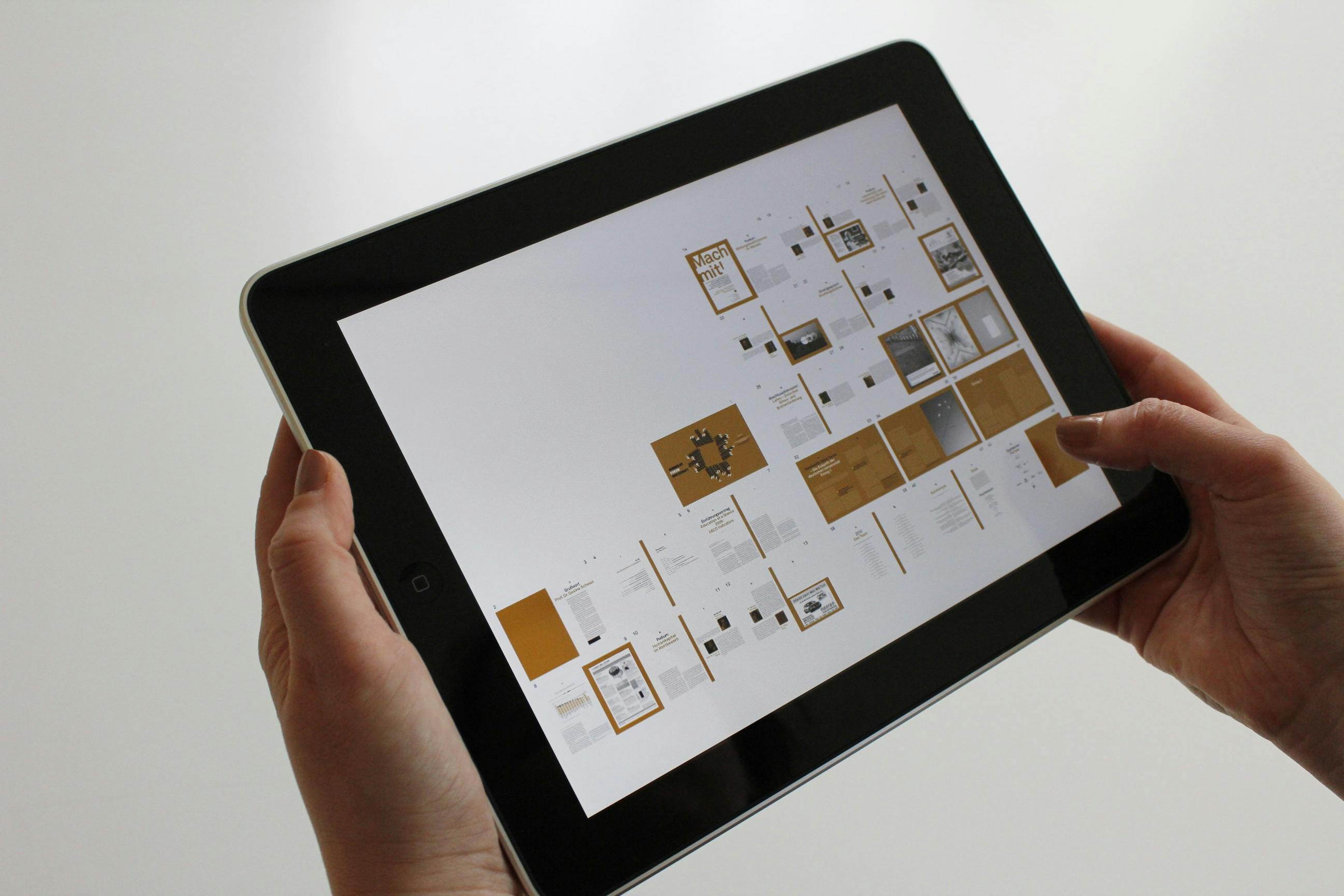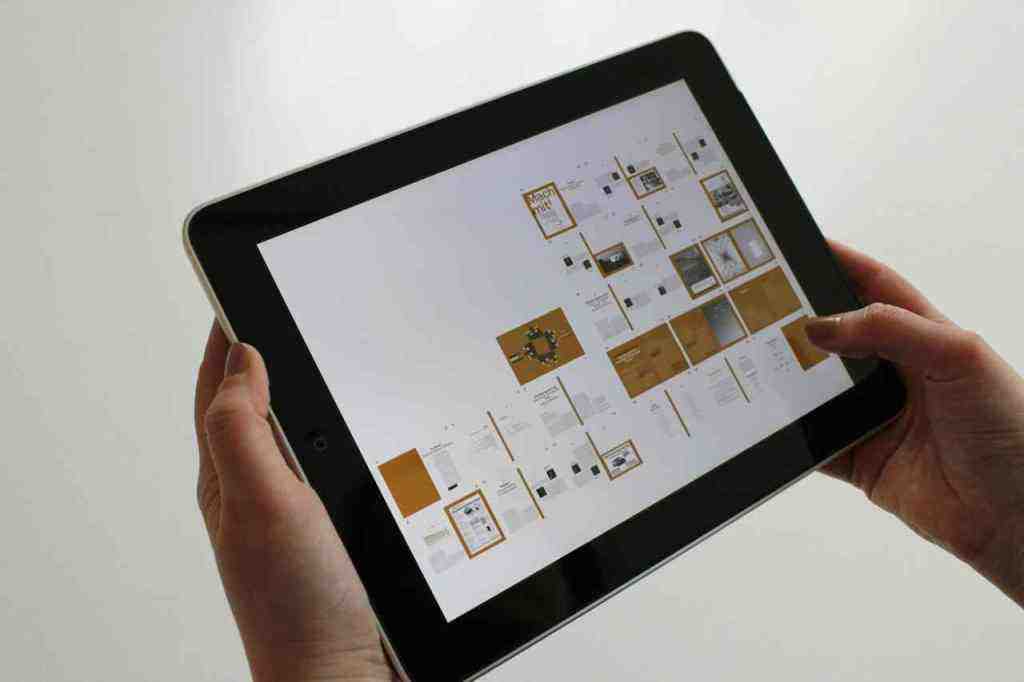Designing for Growth: Goji Labs’ UX Blueprint

The digital world’s always changing, right? New tech pops up, users want different things. It’s a lot to keep up with! But some companies, like Goji Labs, are showing us how smart user experience (UX) design is the real key to sticking around and growing. Their work on the Gaido app is a goldmine for anyone trying to make it in the online space. It’s all about thinking ahead, building flexible systems instead of just piling on features, and always listening to users to make things better. These ideas aren’t just good for today; they’re essential for tackling whatever comes next in web development.
The Foundation of Scalable UX: Designing Systems, Not Just Features
Goji Labs really focused on building flexible systems from the start when they were scaling the Gaido app. They weren’t trying to guess every single feature they’d ever need. Instead, they built a core structure that could handle growth without turning into a mess. The Gaido app is a perfect example of how making smart UX choices early on creates a space where things can evolve naturally, cutting down on those painful overhauls. These ideas aren’t just for travel apps, either. They work for pretty much any online platform or business. The most important thing is remembering that user needs should come before design. This means really digging into what users want and need, and then creating modular pieces that can be easily changed, instead of sticking with rigid layouts that are hard to adapt.
Modular Design for Adaptability and Consistency
A big part of Goji Labs’ strategy was using a modular design system. Think of it like building with LEGOs. They created reusable parts for the interface and design elements that kept everything looking and feeling consistent. This gave Gaido some serious advantages:
- Easier Feature Integration: They could add new features without having to rebuild the whole interface. This is super important for keeping a product fresh and meeting what the market wants.
- Consistent Brand Feel: Every update and change looked and felt the same. This builds trust with users and makes the brand stronger, instead of looking like a patchwork quilt.
- Faster Development: Things moved quicker because the building blocks were already there. This cuts down on delays that happen when things aren’t standardized, which is a win for both new startups and big companies. It means faster responses to user feedback and market chances.
Strategic Navigation for Evolving User Journeys
As products grow, their navigation needs to grow with them. Goji Labs knew that a simple menu that works for a few features can quickly become a headache as more stuff gets added. Those bottom tabs can get cluttered, nested menus can be annoying, and users might have trouble finding what they need. So, they focused on building navigation that could expand smoothly.
Planning for Navigational Complexity
They used smart strategies like dynamic menus that change based on what the user is doing or looking at. They also used progressive disclosure, which means information is only shown when it’s needed. These methods help keep things clear and easy to find, even as the app gets more complex. The goal is to make the user experience feel natural and efficient, no matter how many features are added or how people use the product.
The Critical Role of Continuous Feedback Loops
Making a user experience that can scale isn’t a one-and-done thing; it’s an ongoing process. As more people use a product and it changes, you need ways to keep an eye on what’s working and what’s not. Goji Labs stressed how important it is to have feedback loops to avoid building up “design debt,” which is basically a pile of problems that are hard to fix later.
Measuring UX Health for Proactive Improvement
They made sure to track key UX health indicators. These give you numbers to show how users are behaving and if they’re happy. It’s like an early warning system for problems. Some important things to watch are:
- Completion Rates: How many people actually finish important tasks like signing up, buying something, or booking a trip? If lots of people drop off, something’s wrong with the UX.
- Drop-off Points: Where exactly do users get stuck or give up? Knowing this helps you fix specific pain points.
- Time on Task: How long does it take users to do certain things? If it starts taking longer, the experience might be getting too complicated.
- Qualitative Feedback: This is about getting direct feedback from users through interviews, surveys, and feedback forms. This “why” behind the numbers is super valuable.
In the early days of the Gaido app, usability testing was a lifesaver. It helped the team avoid wasting time and money on features users didn’t actually want. This early validation is key to building products that people will actually use and value.
The Gaido App Case Study: A Practical Application
The Gaido app’s story really shows these ideas in action. At first, they thought about building a really detailed itinerary tool. But after talking to users, they realized people wanted more flexibility in planning. So, they changed their approach. Instead of a strict itinerary builder, Gaido ended up with a simpler planning interface, kind of like Pinterest. This let users save and group places they liked at their own pace, making it a more personal and less restrictive experience.
Addressing User Needs with a Flexible Planning Interface
Figuring out how Gaido would make money was also a challenge, especially since there’s so much free travel info out there. Goji Labs saw that people wanted personalized travel planning. They added a feature where users could virtually chat with local guides to get custom itineraries. This not only made the app more valuable to users but also created a steady income stream, proving how UX can directly help business goals.
Web Development Trends in 2025 and Their Impact on Scalability
The principles Goji Labs used for Gaido are super relevant to what’s happening in web development in 2025. The industry is really pushing for technologies and methods that naturally support growth and change.
The Rise of AI and Automation in Enhancing UX
Artificial Intelligence (AI) and Machine Learning (ML) are changing the game. They offer tools that can automate tough tasks and make user experiences better. AI can help predict user journeys, create content, and power smart chatbots. Tools like GitHub Copilot are already helping developers by automating coding, freeing them up for more creative work. This AI integration makes development smoother, personalization better, and contributes to a more responsive and scalable user experience.
Progressive Web Apps (PWAs) for Enhanced Accessibility and Performance
PWAs are still a big deal, blending the best of web and mobile apps. They’re faster, can work offline, and feel like native apps, making them scalable and accessible on all sorts of devices.
Headless CMS and API-First Architectures for Flexibility
Headless CMS, which separates content management from how it’s displayed using APIs, is becoming more popular. Similarly, API-first design encourages a scalable and adaptable development approach. These choices offer the modularity and flexibility that Goji Labs focused on for Gaido, making it easier to add new features and adapt to changing user needs.
WebAssembly (Wasm) for High-Performance Applications
WebAssembly is emerging as a powerful technology for running complex applications right in the browser. Its efficiency and ability to handle demanding tasks help create a more robust and scalable web application infrastructure.
Serverless and Edge Computing for Scalability and Efficiency
Serverless architecture automatically adjusts computing resources based on user demand, cutting down on infrastructure and maintenance costs. The serverless market is expected to grow a lot, with major cloud providers offering strong solutions. Edge computing, often used with CDNs, further speeds things up by processing data closer to the user.
Voice Search Optimization and Immersive Technologies
With more voice-activated devices out there, optimizing for voice search is becoming crucial. Web development needs to adapt to natural language processing and focus on site speed and mobile-friendliness. Plus, the rise of Augmented Reality (AR), Virtual Reality (VR), and Mixed Reality (MR) points to a future with more immersive and interactive web experiences.
Decentralization and Blockchain for New Paradigms
Decentralized web technologies and blockchain are gaining traction, potentially changing how data is managed and how users are empowered through open-source platforms. This move towards decentralization could influence how applications are built and how users interact with them, emphasizing transparency and user control.
Common Pitfalls to Avoid When Scaling UX/UI
Even with the best intentions, there are common mistakes that can trip up scaling UX/UI efforts:
The Trap of Feature-Centric Development
A frequent error is just adding more features without thinking about whether the underlying system can handle them. This results in bloated, hard-to-manage systems that become difficult to update and scale. Goji Labs’ focus on systems over features directly addresses this problem.
Neglecting Navigation Scalability
Building navigation that isn’t designed for future growth is a major mistake. As we’ve seen, a simple menu can quickly become a confusing mess as a product expands. Planning for navigation ahead of time is essential.
Ignoring the Importance of Feedback Loops
Not having ways to continuously gather feedback means missing out on chances to find and fix UX issues before they become big problems. This leads to “design debt” that’s costly and time-consuming to sort out later.
Designing for the Present, Not the Future
Making UX decisions based only on what’s needed right now, without considering future possibilities, can lead to expensive rework. A forward-thinking approach, like the one Goji Labs took, is key for long-term success.
The Long-Term Value of Thoughtful UX Design
When a product is easy to use, navigate, and consistently meets user expectations, it builds trust and loyalty. This is especially true as a product grows; if the experience stays smooth, users are more likely to stick around and even recommend it. Ultimately, scalable UX is directly linked to sustainable business growth. By investing in flexible, user-centered design from the beginning, companies can avoid costly redesigns, reduce customer churn, and create products that can adapt to market changes and evolving user demands. This smart approach sets businesses up for long-term success, ensuring they can grow without critical UX breakdowns.
Conclusion: The Enduring Power of Scalable UX
The Gaido app’s journey, guided by Goji Labs, really shows that great user experience is more than just looks or immediate function. It’s about building tough, adaptable systems that can handle growth gracefully. In the fast-paced world of web development, especially as we head into 2025 with trends like AI, decentralization, and immersive tech accelerating, the lessons from Goji Labs’ strategic UX approach are more important than ever. By prioritizing flexible architecture, modular design, scalable navigation, and continuous user feedback, businesses can build products that not only meet today’s needs but are also future-proofed for lasting success. Committing to designing for scale from day one is an investment that pays off in user satisfaction, efficiency, and staying relevant in the market.
